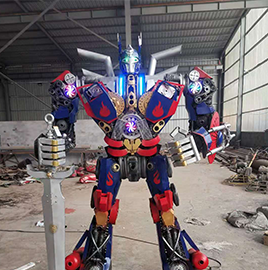MBD基于模型機器人在朝著哪些方面發展?
發布時間:2021-08-19 來源:http://m.hnecatgd.com/
了適應競爭激烈的市場,高科技公司必須快速適應技術發展和高效開發新產品和新技術用以滿足用戶持續變化的需求。盡管計算機硬件成本在降低和算力在持續上升,設計工具不斷自我創新帶來便利,然而高效創新和創新管理依舊是挑戰性話題。挑戰并不止來自技術本身的復雜性,來源于研發模式創新,組織結構適應性和組織文化。
In order to adapt to the highly competitive market, high-tech companies must quickly adapt to technological development and efficiently develop new products and technologies to meet the changing needs of users. Although the cost of computer hardware is decreasing, the computing power is rising, and the continuous self innovation of design tools brings convenience, efficient innovation and innovation management are still challenging topics. The challenge comes not only from the complexity of technology itself, but also from R & D model innovation, organizational structure adaptability and organizational culture.
工程師必須在設計系統時做很多取舍,在越來越快節奏下開展工作,與全球團隊跨時區協作,拉通部門邊界實現高效跨部門協調。比較糟糕的是在不少公司工程師設計產品的方法可能依舊是根植于工業革命時代。
Engineers must make many choices when designing the system, work at a faster and faster pace, cooperate with the global team across time zones, open departmental boundaries and achieve efficient cross departmental coordination. Worse, in many companies, the way engineers design products may still be rooted in the era of the industrial revolution.

機器人系統正在變得越來越復雜。提到機器人感知和控制系統,我們可以想到很多相關,諸如:
Robot systems are becoming more and more complex. When it comes to Robot Perception and control system, we can think of many related problems, such as:
機械本體:3D建模,應力分析模型,模態分析模型
Mechanical body: 3D modeling, stress analysis model, modal analysis model
硬件基礎:驅控硬件系統,安全模塊,示教器及各種傳感器接口等硬件基礎;
Hardware foundation: hardware foundation such as drive control hardware system, safety module, teaching pendant and various sensor interfaces;
核心模塊:運動規劃,動力學,控制算法,抖動抑制,柔性控制,參數辨識;
Core modules: motion planning, dynamics, control algorithm, jitter suppression, flexible control, parameter identification;
智能技術:人工智能,視覺測量和檢測,視覺跟蹤和手眼配合,語音交互,
Intelligent technology: artificial intelligence, visual measurement and detection, visual tracking and hand eye cooperation, voice interaction,
定位導航;
Positioning and navigation;
通訊互聯:橫向的現場通訊,現場到辦公室的縱向通訊(如OPC UA),控制
Communication interconnection: horizontal field communication, vertical communication from site to office (such as OPC UA), control
器內置web server實現跨平臺UI系統與控制器的互聯;
The built-in web server realizes the interconnection between cross platform UI system and controller;
應用軟件:包裝,上下料,打磨,焊接,切割,裝配,噴涂等
Application software: packaging, loading and unloading, grinding, welding, cutting, assembly, spraying, etc